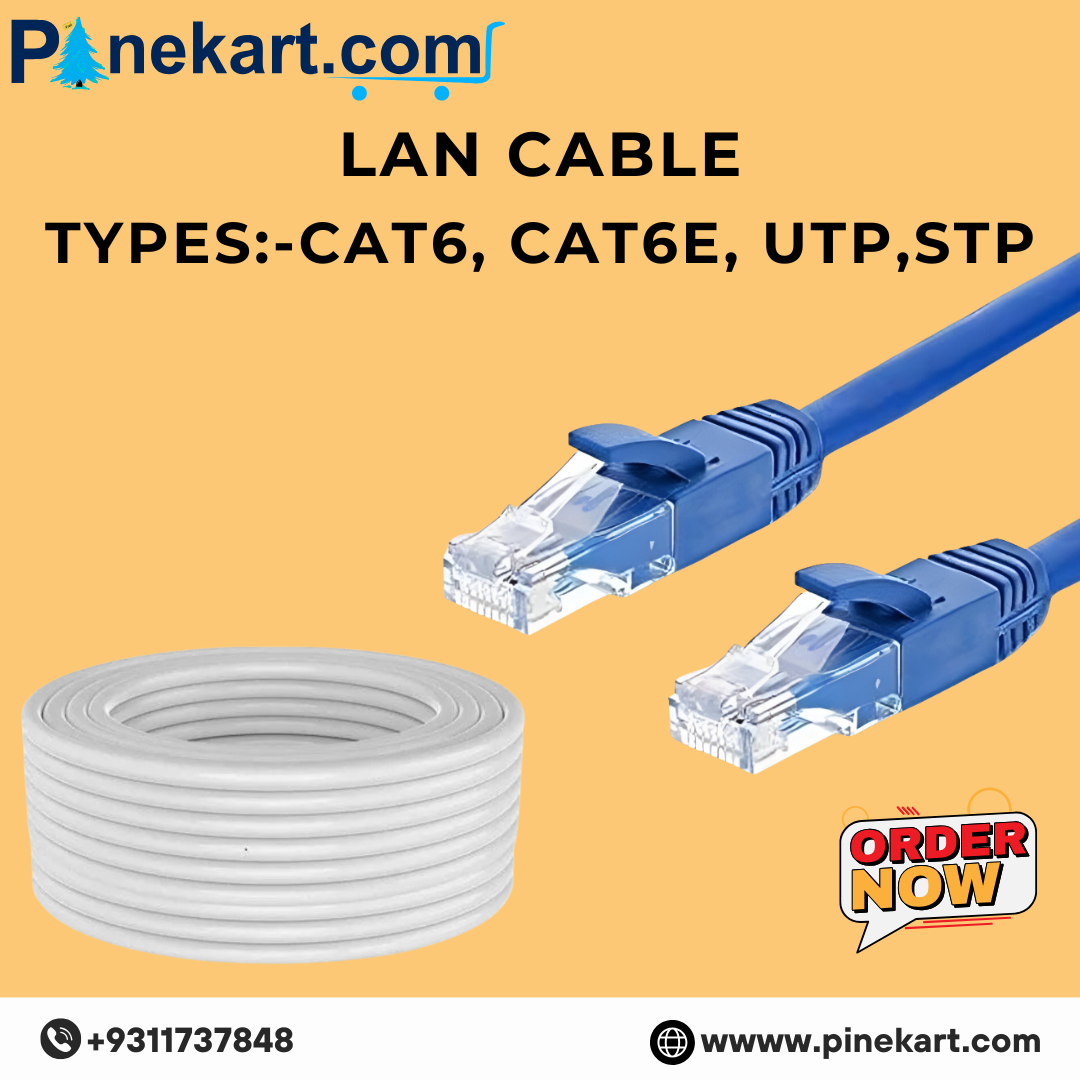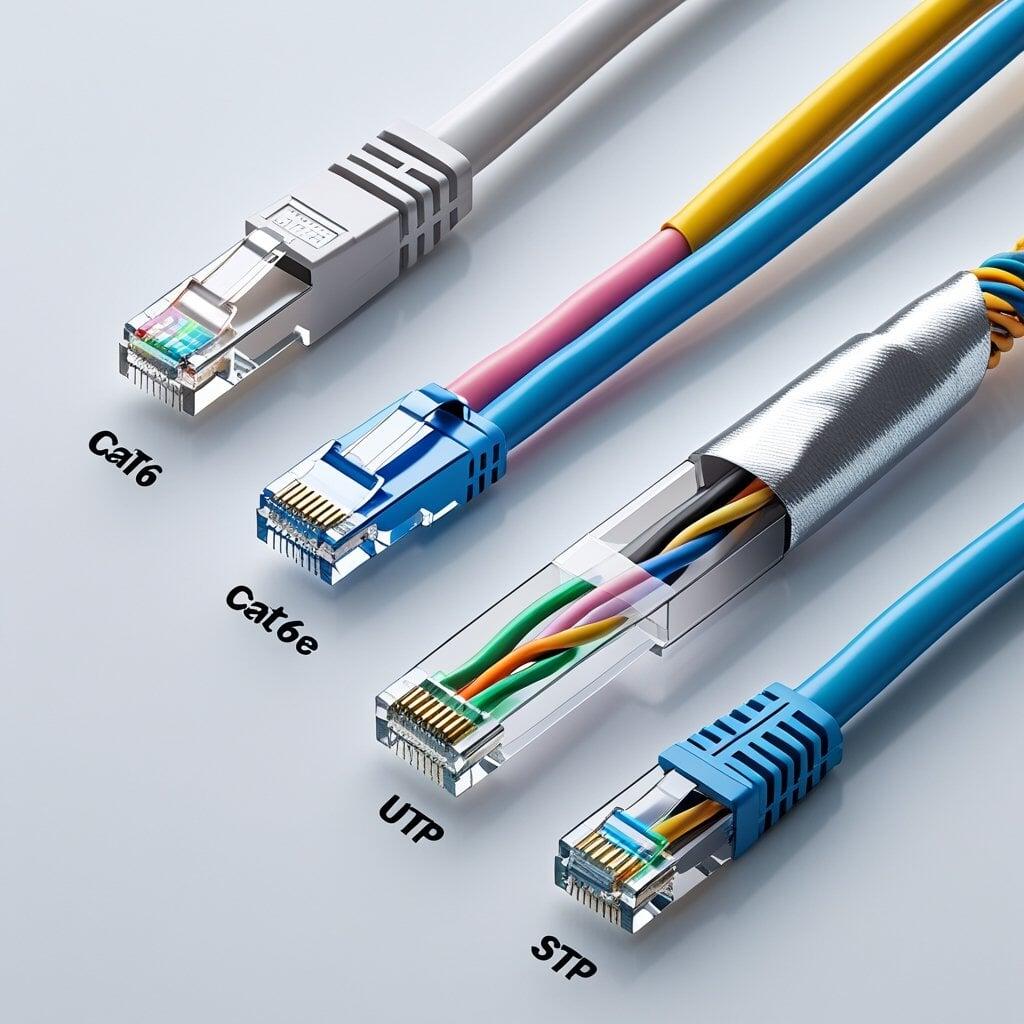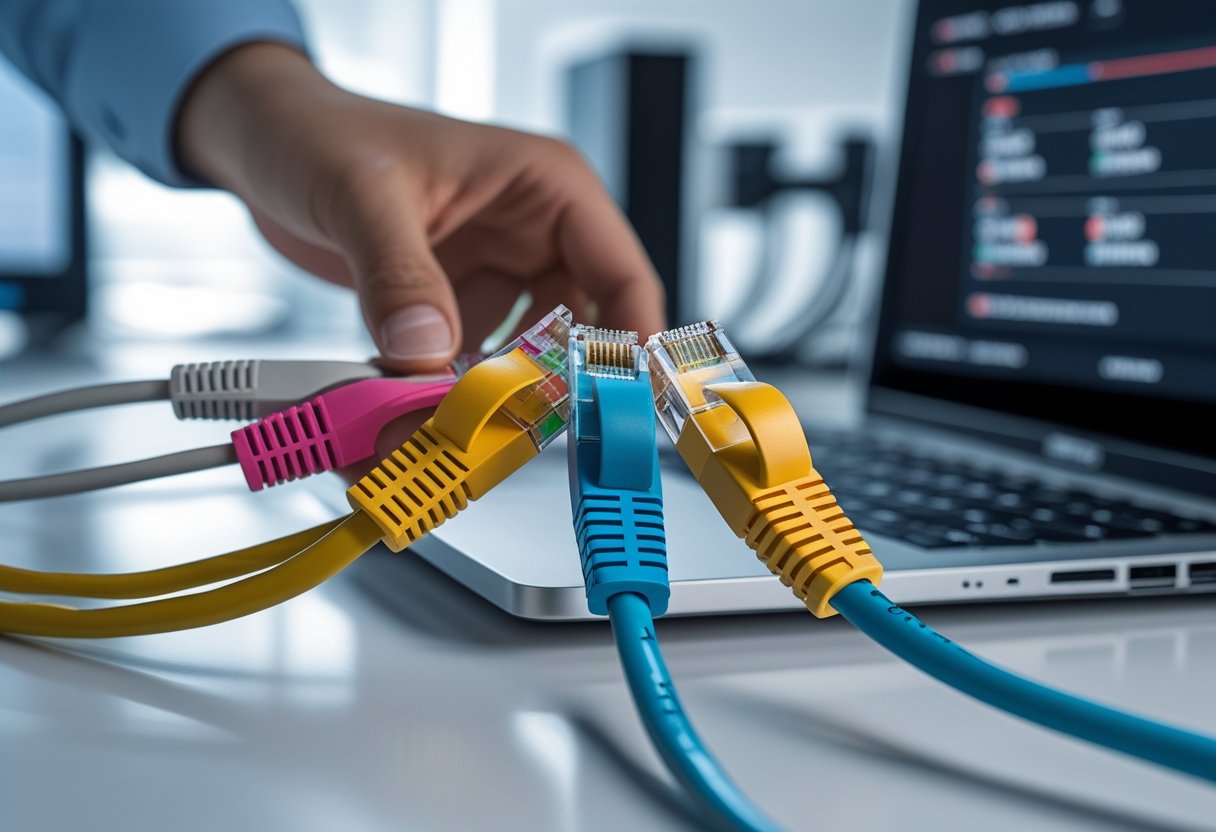In today’s hyper-connected world, internet speed and stability are crucial — whether you're streaming 4K videos, working from home, or running a business. One of the most important, yet often overlooked, components of a fast and reliable internet connection is the LAN cable.
What is a LAN Cable?
LAN (Local Area Network) cables are used to connect devices such as computers, switches, routers, printers, and gaming consoles to a network. They transmit data using electrical signals and are preferred over Wi-Fi for tasks requiring high bandwidth and low latency. LAN cables are also known as Ethernet cables.
While Wi-Fi is convenient, LAN cables are:
Faster
More secure
Less prone to interference
But not all LAN cables are made the same. Choosing the right type depends on the environment and the level of performance you need.
Understanding LAN Cable Categories
1. Cat6 (Category 6) Cable
Cat6 cables are one of the most widely used Ethernet cable types today. Designed to support Gigabit Ethernet speeds, they offer a substantial upgrade over their predecessor, Cat5e.
Key Features:
Speed: Up to 1 Gbps over 100 meters
Bandwidth: Up to 250 MHz
Structure: Usually includes a physical separator to reduce crosstalk
Usage: Ideal for homes, small businesses, and moderate-speed networks
Cat6 cables are affordable and provide a balance between performance and price. They’re compatible with most modern networking devices and are future-proof for several years to come.
2. Cat6e (Enhanced Cat6) Cable
While Cat6e is not an official TIA/EIA standard, it's commonly used in the market to describe a higher-performance version of Cat6. These cables are manufactured with tighter twists and better shielding, which helps reduce electromagnetic interference (EMI).
Key Features:
Speed: Up to 10 Gbps over shorter distances (typically up to 55 meters)
Bandwidth: Up to 500 MHz
Shielding: More advanced than Cat6
Usage: Data centers, professional gaming, video editing setups
If you're planning to run multiple high-speed devices or future-proof your infrastructure, Cat6e is an excellent choice.
Shielding in LAN Cables: UTP vs STP
The second major distinction in LAN cables lies in how they’re shielded. Shielding is important to protect the cable from electromagnetic interference (EMI) caused by nearby electrical devices.
3. UTP (Unshielded Twisted Pair)
UTP cables are the most commonly used Ethernet cables, especially in residential and low-interference environments. These cables have pairs of wires twisted together to reduce interference, but no additional shielding is used.
Advantages:
Lightweight and flexible
Cost-effective
Easy to install
Suitable for home or office use with minimal interference
Limitations:
More prone to crosstalk and EMI in environments with a lot of electronic noise
If you’re wiring a typical home or office with low interference, UTP cables (especially Cat6 UTP) are more than adequate.
4. STP (Shielded Twisted Pair)
STP cables are equipped with metal shielding either around individual wire pairs or the entire cable. This helps prevent external EMI from affecting the signal.
Advantages:
Better noise protection
Improved signal quality
Suitable for industrial or commercial setups with high electrical noise
Limitations:
More expensive than UTP
Less flexible and harder to install
Improper grounding can create issues
STP cables are typically used in data centers, hospitals, factories, and other environments with heavy machinery or sensitive data.
Choosing the Right LAN Cable
When selecting a LAN cable, here are some important factors to consider:
For Home Use:
Cat6 UTP is usually sufficient
Ideal for streaming, online classes, and regular internet usage
Easy to install and affordable
For Gaming and Content Creation:
Cat6e STP or high-quality Cat6 UTP
Ensures low latency and stable high-speed performance
Supports bandwidth-heavy applications like video editing and gaming
For Office or Business Networks:
Use Cat6 or Cat6e depending on bandwidth requirements
UTP is fine for low-interference offices
STP is better for areas with lots of cabling or electronic equipment
For Industrial Environments:
STP Cat6e is highly recommended
Resistant to EMI from machines and power equipment
Installation Tips
Avoid bending the cable too tightly — it can affect performance.
Keep cables away from power lines or fluorescent lights to reduce interference.
Use high-quality connectors (RJ45) for secure connections.
Don’t mix UTP and STP in the same network unless the grounding is properly done.
Label your cables if installing in bulk — it helps with troubleshooting later.
Future Trends in LAN Cabling
As internet speeds continue to grow, especially with the rollout of fiber-optic broadband and the increasing need for smart homes, newer LAN cable standards like Cat7 and Cat8 are gaining popularity.
However, for most home and office users in 2025, Cat6 and Cat6e provide more than enough performance, especially when paired with quality routers and switches.
Frequently Asked Questions (FAQs)
Q1: Is Cat6 better than Cat5e?
Yes, Cat6 offers higher speeds, better shielding, and less crosstalk than Cat5e.
Q2: Can I use Cat6e with a Cat6 router or switch?
Yes, Cat6e cables are backward compatible with Cat6 and Cat5e devices.
Q3: What's the difference between STP and UTP?
STP has shielding to protect against interference, while UTP does not. STP is ideal for high-noise environments.
Q4: Can I run Cat6 cable for long distances?
Yes, up to 100 meters (328 feet) for 1 Gbps speed. For higher speeds like 10 Gbps, distance should be kept under 55 meters.
Q5: Is Cat6e an official standard?
No, "Cat6e" is not officially recognized by ANSI/TIA but is widely marketed as an enhanced version of Cat6.
Conclusion
LAN cables might seem like a simple piece of hardware, but they are critical to the performance of your network. Whether you’re building a smart home, setting up a business network, or upgrading your gaming setup, choosing between Cat6, Cat6e, UTP, and STP can make a big difference.
For most users, Cat6 UTP is the go-to solution. But if you need higher speeds or better protection from interference, consider Cat6e STP. Choose wisely, and enjoy a stable, high-speed network that keeps up with your digital lifestyle.





